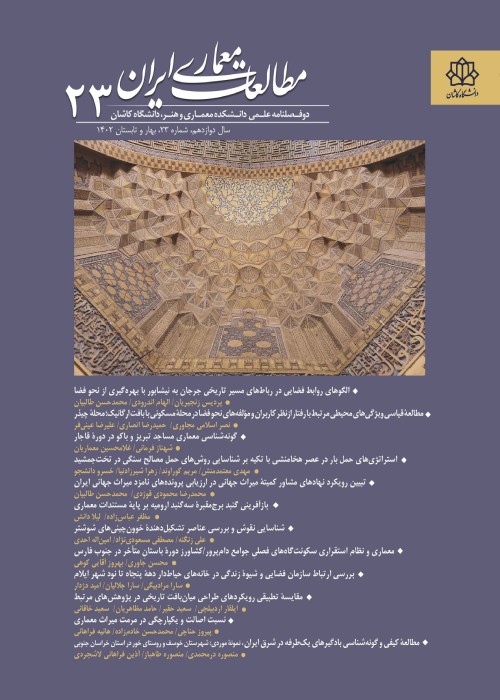The Role of Vegetation in Moderating Outdoor Thermal Sensation:The Case of Sistan Region
The subject of outdoor thermal comfort has been researched since 1970. Due to its differences with indoor thermal comfort, it must be assessed with the proper indices. Also, the outdoor thermal comfort of each geographical region must be assessed independently. This research aims to study the measurement indices of outdoor thermal comfort and subsequently determine the most relevant index to assess outdoor thermal comfort in the hot arid climate of Sistan Region (situated east of Iran in Sistan and Baluchestan Province). Next, the structural factors effective in moderating outdoor thermal comfort are identified.
For this purpose, two sites with different types and densities of vegetation, floor area ratios, and pavement types were selected in Sistan Region. Field measurements were performed during certain days of June-August of 2016 (representing the hottest days of summer) during daytime in three-hour intervals. A review of past studies showed that physiologically equivalent temperature (PET) is the most relevant and the most used index for assessing outdoor thermal comfort. Based on the results of the descriptive analysis of the selected sites, the PET index was 1.5° C lower in site 1, which consisted only of vegetation and no buildings, as compared to site 2, which consisted of both vegetation and buildings, showing that site 1 had better comfort conditions. In addition, it was shown that the overall state of thermal sensation in Sistan Region is “very hot” during summer, except for areas that have shading and dense vegetation in which the state is “hot”. Furthermore, inferential statistical analysis of data indicated that there is a significant correlation between the PET index and climate variables such as air temperature, relative humidity, and mean radiant temperature, as well as the structural factors of plant species and vegetation density. The PET index is highest in areas with no vegetation; average in areas with sparse bushy vegetation; and lowest in areas with dense vegetation and trees.
- حق عضویت دریافتی صرف حمایت از نشریات عضو و نگهداری، تکمیل و توسعه مگیران میشود.
- پرداخت حق اشتراک و دانلود مقالات اجازه بازنشر آن در سایر رسانههای چاپی و دیجیتال را به کاربر نمیدهد.




